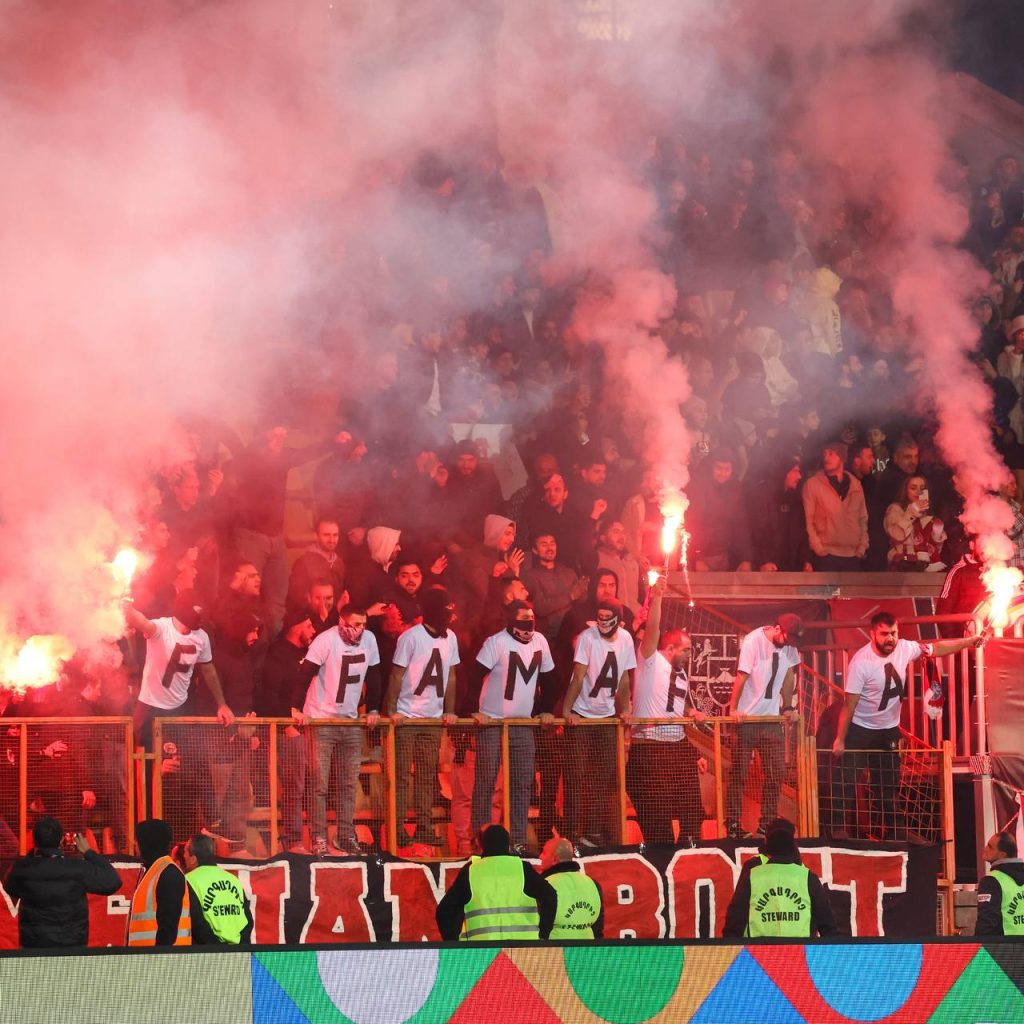By Alexander Pracht
Armenia’s national football team has been without a head coach for over four months since the dismissal of Ukrainian Oleksandr Petrakov in October following a poor Union of European Football Associations (UEFA) Nations League campaign.
The Football Federation of Armenia (FFA) appointed Suren Chakhalyan as interim manager for the final two matches in November, promising a permanent replacement by year’s end, but no appointment has been made so far. Meanwhile, the organization faces growing criticism from fans and domestic clubs over its policies, with calls for the leadership’s resignation intensifying.
Who is Petrakov and why was he dismissed?
Oleksandr Petrakov gained international recognition in 2019 when he led Ukraine’s U-20 team to victory in the FIFA World Cup, a historic achievement for the country’s youth football. He later took charge of Ukraine’s senior national team but failed to qualify for the 2022 World Cup in Qatar.
Petrakov was appointed head coach of Armenia’s national team in January 2023. While Armenia did not qualify for Euro 2024, some promising performances, including a surprise win over Wales, secured his position for a while. However, his tenure was marred by criticism, particularly regarding his squad selection and player management.
In Armenia, Petrakov had conflicts with key players, most notably Tigran Barseghyan—currently Armenia’s most prolific forward in European club football with Slovan Bratislava. Barseghyan, along with midfielder Khoren Bayramyan, was left out of the national team entirely due to personal disputes with the coach.
Grant-Leon Ranos, a young and promising striker playing in Germany, was regularly called up but rarely used as a starter. Despite his creativity and attacking vision, Petrakov’s reluctance to give him significant playing time limited his impact on the team.
Sources close to the national squad also indicated that many other players were unhappy with Petrakov’s approach. Rather than adopting a tactical, modern European coaching style, he was focused on “disciplining” players, treating them more like academy prospects than seasoned professionals.
The Armenian Football Federation stood by Petrakov for a long time but ultimately dismissed him after back-to-back defeats against North Macedonia and a draw against the Faroe Islands—teams considered on par with or even weaker than Armenia.
Mounting pressure on FFA leadership
The Football Federation of Armenia is facing mounting pressure as three major Armenian Premier League clubs, namely Pyunik Yerevan, Shirak Gyumri, and FC Urartu, have publicly called for the resignation of chairman Armen Melikbekyan and his leadership team. The clubs cite mismanagement and the overall decline of Armenian football at both the national and club levels as their main concerns.
“Armenia’s football is in a downfall both at club and national team level. The situation is becoming critical,” Pyunik Yerevan, the country’s most decorated club, said in a statement in November. Shirak FC echoed these concerns, warning that several clubs could cease to exist if the crisis continues. Their demands come amid years of setbacks, including poor performances by national and youth teams and the dissolution of several professional clubs.
Not all clubs have aligned with the movement, however. Ararat Yerevan, once a powerhouse but now a mid-table side, has backed Melikbekyan, citing what it describes as “ongoing infrastructure improvements in youth and women’s football.”
The push for change has also been fueled by fan groups. Major supporter organizations, including the national team’s FAF and Red Eagles, as well as Pyunik’s Sector 18 fan club, have joined calls for new leadership in the FA.
Melikbekyan reportedly had a long-standing conflict with Pyunik’s management, further complicating the situation. Pyunik’s former owner, Artur Soghomonyan, recently sold the club to Spanish businessman Anton Farber. In his statement, Soghomonyan revealed that pressure from the federation forced him to sell Armenia’s most decorated club.

Additionally, speculation surrounds the FFA’s relationship with Armenia’s biggest football star, Henrikh Mkhitaryan. The Inter Milan midfielder has not played for the national team since 2021, offering no public explanation for his absence, which has only added to the uncertainty surrounding Armenian football. Though Mkhitaryan himself has not publicly addressed the matter, widespread speculation suggests that he is in a deep conflict with the FFA leadership, and Melikbekyan personally.
What’s in store for the future?
Armenia’s upcoming fixtures against Georgia on March 20 and 23, both home and away, will be crucial in deciding which team gets promoted to a higher group in the next edition of the Nations League. With the clock ticking, the Armenian Football Federation has no more than a month to announce a new head coach. Michel Der Zakarian, a former international for Armenia and a successful coach in French club football, seemed like a feasible option, but the FA’s statements suggest that it cannot meet Der Zakarian’s salary demands. Other names, such as Spanish legend Raúl, were also mentioned by the FA, but nothing has materialized.
Such statements only seem to frustrate the public further. There is a growing sense that if the Federation is struggling financially and lacks ambition, big names of the coaching world will not be coming to Armenia. At best, it may be a mediocre coach from Russia or Armenia. Thus, the Federation appears to be deliberately fueling public discontent with its inaction and inability to provide meaningful responses to rising concerns.
Meanwhile, the two-match series against Georgia holds more of a symbolic than sporting interest. The rivalry between the neighbors has been long-standing, dating back to Soviet times. Unfortunately, Armenia’s national team is approaching these critical matches in a dire state, ill-prepared for the challenge ahead.
The post Armenia’s national football team remains coachless amid FFA turmoil appeared first on CIVILNET.




















